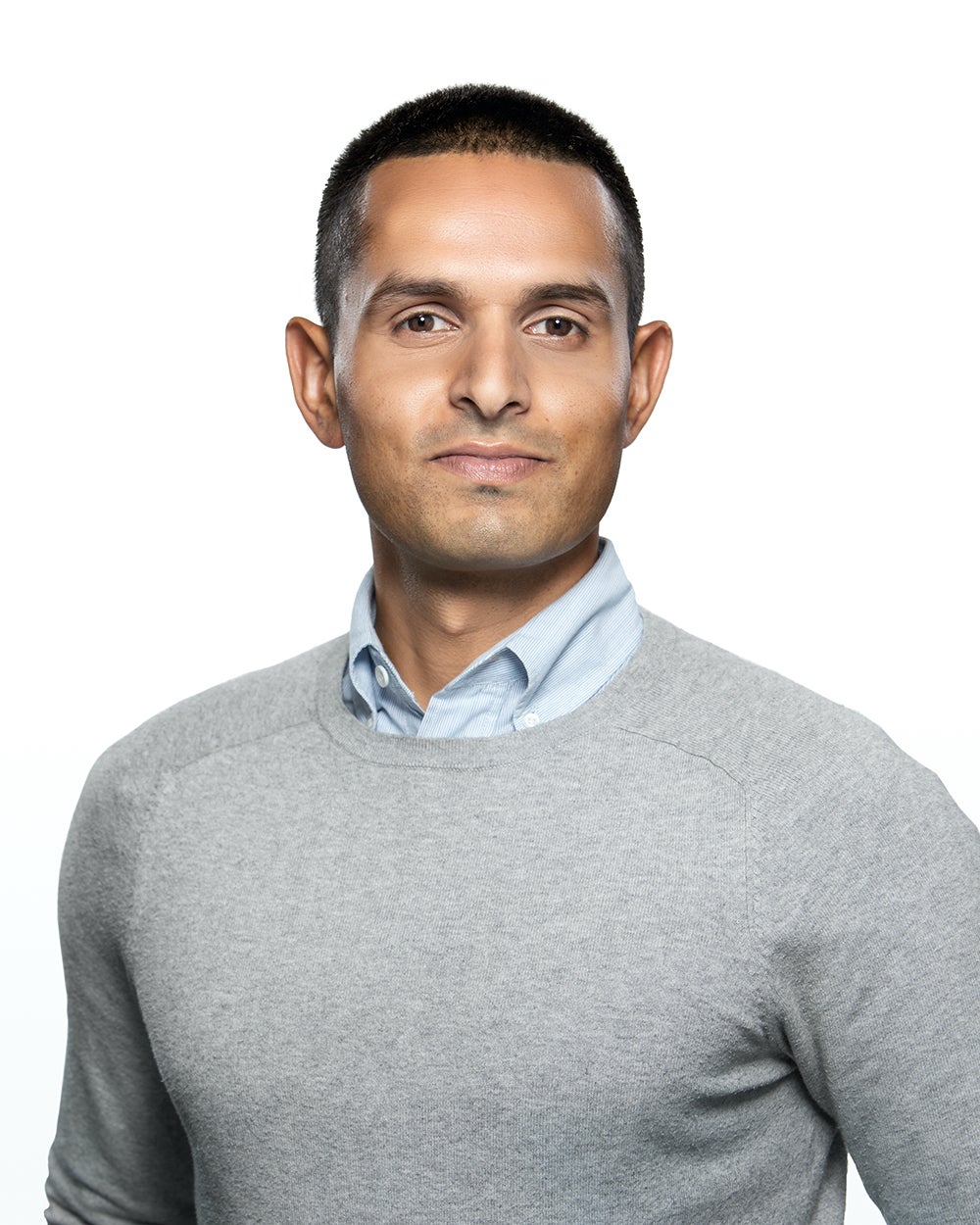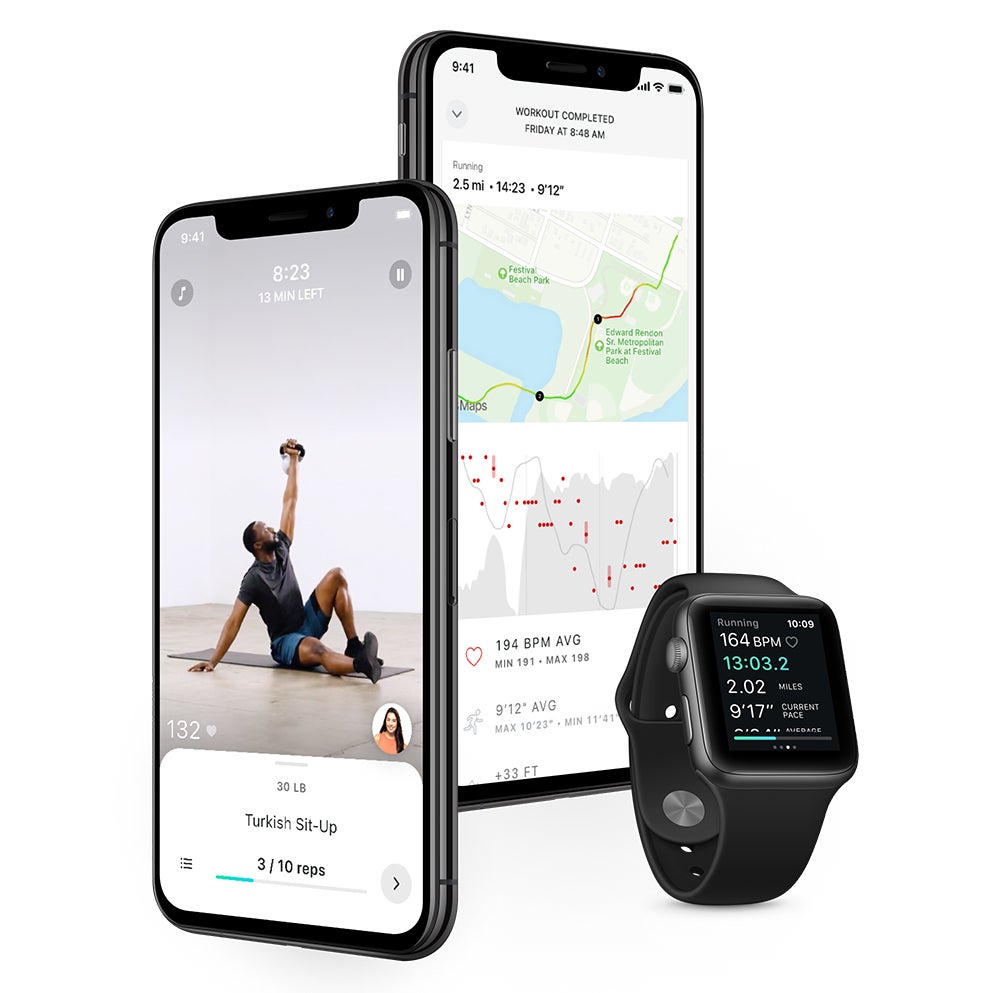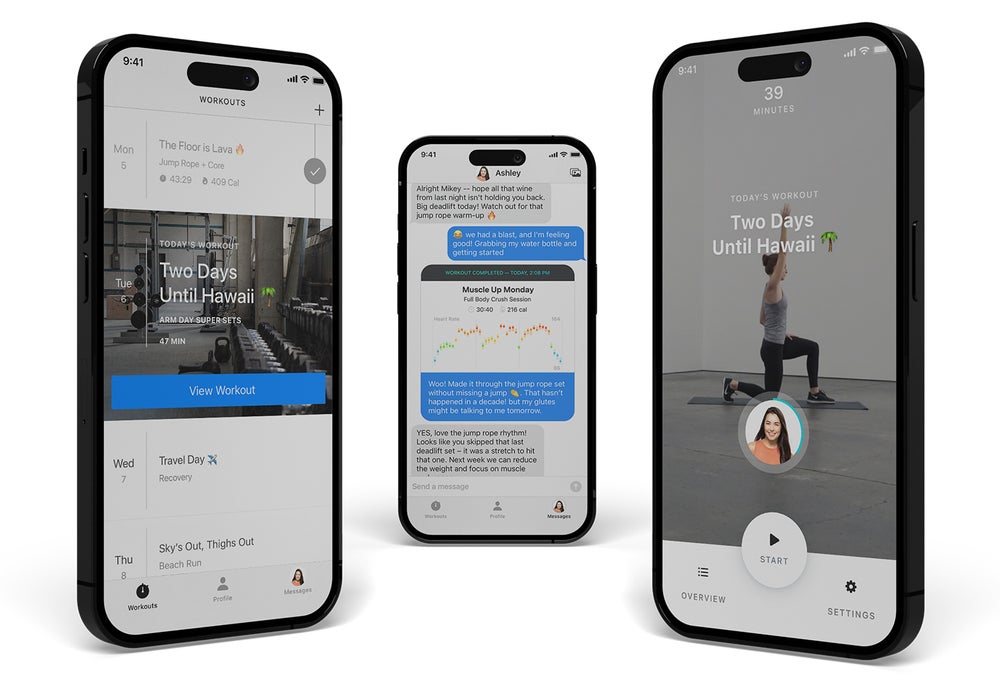What's The Real Reason Workout Goals Don't Stick? This Tech Founder Figured It Out and Now His Fitness Startup Has a 90% Retention Rate. Rishi Mandal co-founded Future with a former iPhone engineer, and built a business with "anomalous" outcomes in an industry with infamously bad customer retention rates. And his method for getting results can be applied to many different industries.
By Frances Dodds Edited by Mark Klekas
How often have you signed up for a new fitness regimen of some kind, and lost steam a few months in? New Year's workout resolutions may spring from rock-hard convictions, but within a couple of months, most of us lose steam. Even amid the proliferation of boutique fitness studios and "fitspiration" influencers, the percentage of U.S. adults who meet the CDC's guidelines for "aerobic and muscle-strengthening activity" is just 24.2% — the same as it's been for decades. Perhaps, then, it's no surprise that customer churn rates are also the single biggest problem for fitness businesses.
That's why it's particularly impressive that Future, a fitness app that pairs customers with personal trainers to build individualized weekly workout plans, has locked in a 90% retention rate for users after 90 days — the point when people's dedication typically falls off a cliff. Future costs $150 a month, and the average user works out 16 times a month for 40 minutes.
Related: Here's the Best State to Start a Business — and the Worst, New Research Reveals
Rishi Mandal, who cofounded Future in 2019 with Justin Santamaria — a former Apple engineer who led development teams on iMessage and FaceTime — says they built a business model that "did the radical opposite" of what most fitness companies do to retain customers. Instead of making it hard for customers to quit, or requiring them to pay for multiple months upfront, they insist that customers confirm whether they want to continue using Future every single month, before they get charged. That way, Future is getting a radically honest picture of how much people are valuing its service. And the answer is: quite a bit. Future is now the largest private employer of full-time fitness trainers in the country.
Here, we talk with Mandal about what it takes to disrupt an industry's most intractable problem, and why he sees Future's work as one piece of a much broader movement toward acknowledging what it takes to live a long and healthy life in our modern world.

Can you tell us a little bit about your background and the line of questioning that led you to Future?
So I've been in tech for about 15 years. Before that I was in academia, in astrophysics, but I eventually got bored. I joined a small company that was acquired by Google, and then I founded another tech company that recommended local experiences, and that was acquired by Postmates. After working at Postmates for a year, I wanted to work in a space that felt important to me. So I ended up spending a year as an BIZ Experiences in residence at Khosla Ventures, an investment fund in Menlo Park. And it just so happened that about a third of their investments were in clinical healthcare — medical devices and drug discovery algorithms, stuff that I know basically nothing about. But I'm listening during these meetings with companies pitching or experts coming in. And for these people to provide context for their intervention or their device or whatever, they would all sort of set the table about health in America.
And they routinely said stuff like, "75% of Americans are overweight," or, "60% of us live with chronic conditions." And everyone around the room was nodding like, yep, yep, that's the standard. And I was just struck by this — by how grave the picture is.
Related: Overweight, Drunk and Exhausted: Commuting Is Bad for Your Health, According to a New Study
In our country, we'll spend four trillion — going on seven trillion — on healthcare every year over the next 10 years. That's 20% of our GDP. And yet, by any empirical measure, quality of life is degrading year over year. Life expectancy is decreasing year over year. Quality of life is lower compared to our peer nations, and we spend more on healthcare than they do. So how can any curious person not ask: What the heck is happening here?
So… as far as you can tell, what the heck is happening here?
Well, it turns out there's a lot to unpack. There are many, many, many reasons. There's genetic factors, for example, which are obviously very hard to shift. There are socioeconomic challenges. Some people live in food deserts, and no matter how much you lecture them, it will be very challenging for them to eat healthy. But one of the biggest inputs is our everyday behaviors. There are five things we do on a daily basis that have a big impact on not only how long we live — but how great those years can be.
What are the five things that determine how long Americans will live?
Those things are: How we move, how we eat, how we sleep, how we deal with stress or mental health — and the fifth one's a little more esoteric, but it's whether or not you take your meds. It turns out Americans are horrible at doing that fifth one. But these are everyday behaviors that, if you don't do them well, compound over the course of five, 10, 20 or 30 years.
And what fascinated me about this is that it's obvious, from my lived experience as an adult, that these things are all hard to manage. And when we started to look at this problem, it kind of blew us away. The expectation is for us to manage all of these things on our own?
Related: Want To Make Money As a Freelancer? Avoid This Mistake That Can Cost You Clients.
How you're moving, how you're eating, how you're sleeping, stress, and so on. The average American has a job or two, a partner, a family, they're dating, they have social obligations. They have student debt, all sorts of things on their plate. So the idea that on top of all of that, you should also attack these pretty profound and complicated universes of nutrition, mental health, exercise, movement and physiology — it actually sounds crazy.

Of those five behaviors, you decided to focus on fitness. What was the thing you zeroed on changing in that realm?
Every year the majority of Americans pick up a workout routine. So that's a lot of activation. We spend 50 to 100 billion dollars a year trying to move more, and then incredibly, 80% of us fail. The CDC stat is that 75% of Americans don't meet the bar of moving enough, which is actually a quite modest bar.
That stat is so interesting because it hasn't changed in 35 years, going back into the '90s or whatever. And that's despite the rise in boutique fitness and CrossFit and all that. The problem is not that people need new ways to work out. The problem is that nothing sticks. People typically pick up a workout routine, and then within 90 days, half of them are gone. So we wanted to build something that keeps you on track over a long period of time.
Where did you start?
The first thing we did was find pockets of people who have a track record of maintaining high performance or healthy living for extended periods of time — like six or 10 years on end — despite having a bunch of demands on their time. And we found this in small, elite populations: ro athletes, A-list celebrities, and Fortune 500 executives.
We wanted to figure out the diverse solutions these people were employing to stay fit, and translate the lessons. But it turns out, they all do the same exact thing. They get help!
Related: The Super Successful Have These 5 Attributes
They don't go online and Google how to eat healthy and download an exercise plan or something. They build a compilation of experts around them — because they can afford to do that. In these populations, it's very common to have a personal trainer who comes to your house, rings the doorbell in the morning, and tells you what to do. Or a chef who stocks your fridge with 12 meals a week and knows what your kids like to eat and what's healthy.
What we saw consistently is that for sustained success, it takes a village. And if you can afford to spend a hundred dollars an hour on a fancy coach, then wonderful. But obviously, that's a 1% solution. Everybody else is left sort of trying to tape it together themselves. So the question we started to ask was, does the coach really have to be standing next to you all the time to be effective? Our hypothesis was maybe not.

So how did you translate the most important in-person aspects of the trainer experience to an app?
We started by asking, what is so powerful about coaching? Well, most importantly, they tell you what to do. At Future your coach makes you an individualized plan for the week, so you never have to think about it. No matter the constraints of your day — if you're running late, or your shoulder hurts, or you're traveling, or whatever.
The second thing is they keep you accountable. Our average customer trades four text messages every day with their coach, two coming, two going. And then the third thing we saw — when we watched hundreds of hours of people being coached — is that a lot of their time is spent chopping it up, talking about life, talking trash about the Knicks, talking about their vacation. And most technologists would wave this away like, "that's et cetera." But our spidey-senses went off, and we thought, actually, this matters. When you build an affinity with someone, it allows the coach to push you harder. So we actually build a white space into every coach's time to think about you outside of your fitness.
So what does the Future experience look like in practice?
We give you a real human who talks to you every single day. Albeit, over text, so your coach is not Zooming into every workout — which would be equally as inconvenient as aligning schedules. But they build you a new training plan every Sunday. If you're traveling this week, your coach will call your hotel and figure out what equipment is there, and maybe give you something a little easier after the plane, stretching or whatever is realistic for you.
When you go to the app and hit start on your workout, your coach will guide you through it, like, "Hey, Rishi, today we're gonna work on, x, y, and z part of our body, and I want you to focus on bracing your core," or whatever. We also get our customers an Apple watch, something that we bundle for them or many of them already have. So your coach sees if you're doing your workout routine or not, every set and rep, what your heart rate is doing, your splits and all of that, so their compliments and feedback are very specific and constructive.

What were some surprising business decisions you made?
Early on, it would've been very easy for us to say, "Hey, pay for three months up front." You'd probably turn off a bunch of people because it's a high dollar amount, but the people who would opt for that will stick at a higher rate. So you're really doing a kind of trick with the numbers, like "Oh we have this super high 90-day retention rate," but it's actually just the design of how we ask people to pay for this. And that's the standard strategy in fitness, to lock people in. You've probably experienced this at your gym. You pay an upfront activation, and then they make it very hard to cancel.
But we didn't want to do that. We wanted to see if our system was radically better. So instead we did — and still do — the opposite. The only way to buy Future is monthly. A week before your first recurring charge, we will remind you: "Hey, we're about to charge you 150 bucks. So if you're not loving it, you should leave." We also have a satisfaction guarantee, and we'll give you your money back if you thought we weren't good enough. We've done this since our founding, and people criticize it from a business perspective because you're forcing the customer to make 12 buying decisions a year.
What's the ultimate goal of this strategy?
It's allowed us to get clear information on how to build the best thing. Early on we created this cohort system. We found 100 to 200 hundred people willing to pay for a coach, and we put them in a cohort to see how long they lasted.
The industry standard is that half of people drop off after 90 days. So our first cohort was not good enough, because maybe 75% of people fell off after 90 days. That's a good 50% better than the norm, but not remarkable in our eyes. So we got together with our coaches and our tech team to figure out, okay, where are people falling off? All of these interactions are digitized, so you can go back through and say, okay, this person was humming along and then kind of fell off here. The coach might say, oh, I said the wrong thing, or I pushed them too hard, or they got injured, or whatever. There are lots of reasons. So then we took that information and built and built and built, and brought in a new cohort, and now they're at 80% retention. Better, but still not good enough. And then finally, when we got to 90% retention rates after 90 days, we were like, "Wow, this is starting to get anomalous."
So that's when we said let's keep broadening the number and diversity of customers. Let's go out and intentionally sign up geographically or psychographically diverse groups of people. Eventually we started seeing consistently that when you get a coach and you do a FaceTime call up front, and they get to know you, and then they build you this thing and check in, people stick at an insanely high level.











